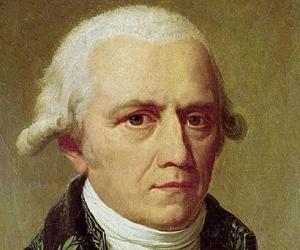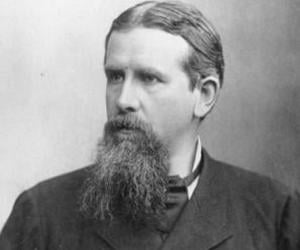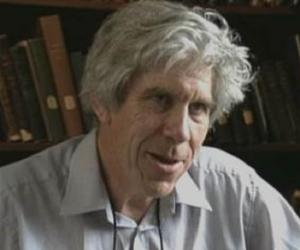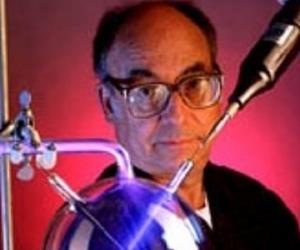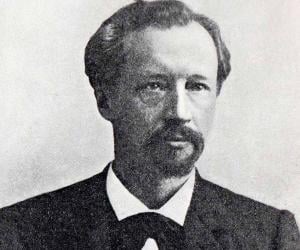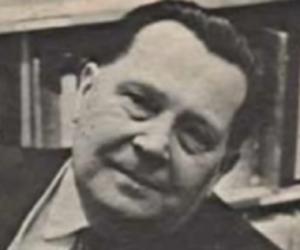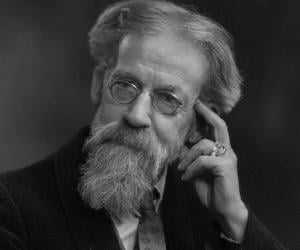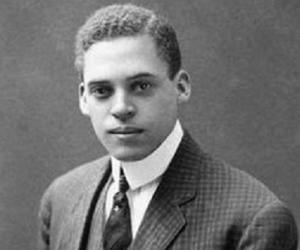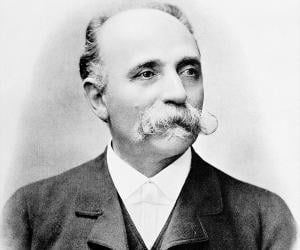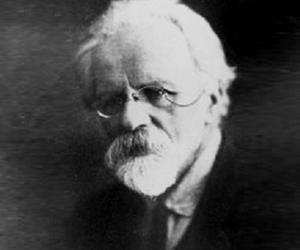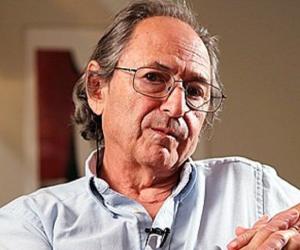Quick Facts
French Celebrities Born In August
Also Known As: Jean-Baptiste Pierre Antoine de Monet, chevalier de Lamarck
Died At Age: 85
Family:
Spouse/Ex-: Charlotte Reverdy (m. 1793–1797), Julie Mallet (m. 1798–1819), Marie Anne Rosalie Delaporte (m. 1778–1792)
father: Philippe Jacques de Monet de La Marck
mother: Marie-Françoise de Fontaines de Chuignolles
Born Country: France
Biologists French Men
Died on: December 18, 1829
place of death: Paris, France
Notable Alumni: Jesuit College
More Facts
education: Jesuit College
awards: Knight of the Legion of Honour
Childhood & Early Life
Jean-Baptiste Lamarck was born on 1 August 1744, in Bazentin, Picardy, France, to Marie-Françoise de Fontaines de Chuignolles and Philippe Jacques de Monet de La Marck.
In the late 1750s, he attended Jesuit College in Amiens and later joined the French army. Lamarck showed great courage in the Pomeranian War with Prussia.
After being awarded a commission, he was transferred to Monaco where he developed an interest in botany.
Lamarck then studied French flora under notable naturalist Bernard de Jussieu. In 1776, he wrote his first scientific essay on a chemical treatise.
Career
In 1778, Lamarck published a three-volume work titled ‘Flore françoise’. A year later, notable scientist Georges-Louis Leclerc, Comte de Buffon, helped him gain membership to the prestigious French Academy of Sciences. Then in 1781, he earned a commission as a royal botanist.
In 1790, Lamarck renamed the Royal Garden as Jardin des Plantes. Three years later, he was appointed professor of invertebrate zoology and curator at the Muséum national d’histoire naturelle.
In 1801, Lamarck published a major work on the classification of invertebrates, titled ‘Système des Animaux sans Vertebres’. In his work, he proposed definitions of natural groups among invertebrates.
His work in 1802 included ‘Hydrogéologie’ in which he used the term ‘biology’ for the first time. That year, he also came up with ‘Recherches sur l’Organisation des Corps Vivants’ in which he stressed on his theory of evolution.
Later, Lamarck published more works to outline his theory. This included ‘Philosophie Zoologique’ in 1809 and ‘Histoire naturelle des animaux sans vertèbres’ between 1815 and 1822.
Lamarckian Evolution
In 1802, Lamarck came up with some basic principles of evolution through which he explained how traits from an organism is passed on to its descendants.
His theory focused on two major themes. The first stressed on the changes that occur in animals due to environmental factors. The second one stated that different parts of bodies make organic movements possible in animals.
The biologist believed many mechanisms to be drivers of evolution and used them to explicate the two forces he believed constitute evolution. According to him, the two forces helped animals evolve from simple to complex forms, and aided them in adapting to their surroundings.
Le pouvoir de la vie: The Complexifying Force
Lamarck generated a phenomenon called Le pouvoir de la vie through which he described the tendency of organisms to escalate from their simpler forms to complex ones. This phenomenon was represented via a progress ‘ladder’.
Lamarck stated that once living organisms develop, the movements of fluids in them drove them to evolve and reach greater levels of complexity.
He also stressed that simple organisms never disappear as they are constantly created by spontaneous generation.
L’influence des circonstances: The Adaptive Force
Lamarck theory’s second component was the adaptation of organisms to their surroundings or environment. According to this theory, organisms move upward in the ladder of progress and create new forms with local adaptations.
The theory also states that organisms can reach a state where they can become so adapted that no further change can occur.
He proposed two laws for this theory. The first law of ‘use and disuse’ states that in every evolving organism, a continuous use of any organ enlarges and strengthens that organ and also gives it a power proportional to the time span it has been used. Also, the permanent disuse of any organ weakens it and diminishes its functional ability until it disappears.
The second law, called ‘inheritance of acquired characteristics,’ states that an organism can pass the traits it has acquired during its lifetime to its offspring. Also known as soft inheritance, this theory later contradicted the ones of other biologists, including August Weismann who developed the concept of germ plasm (later redefined as DNA).
According to later studies, DNA is not altered by the environment or behavior except through selection. Also, the association of the genotype to the phenotype can alter by experience within the lifetime of an individual.
Family & Personal Life
Jean-Baptiste Lamarck married Marie Anne Rosalie Delaporte on 8 August 1778. They had many children, including André, Antoine, and Charles René
After Marie’s death in 1792, he married Charlotte Reverdy a year later. The couple stayed married until Reverdy’s death in 1797.
His third and final wife was Julie Mallet to whom he was married from 1798 to Mallet’s death in 1819.
Death & Legacy
On 18 December 1829, Lamarck died in Paris. He was 85.
His theory of evolution got attention only after Charles Darwin’s ‘On the Origin of Species’ got published in 1859.
Although his theory of adaptation was rejected by August Weismann in the 1880s when he developed the concept of DNA, a few biologists, including Stephen Jay Gould, regarded him as the “primary evolutionary theorist”.
Many plant and animal species are named after Lamarck, including Cyaneia lamarckii aka bluefire jellyfish, Amelanchier lamarckii aka Juneberry, and Aconitum lamarckii (a plant).
Facts About Jean-Baptiste Lamarck
Jean-Baptiste Lamarck was a pioneer in the field of evolutionary theory and was one of the first scientists to propose a comprehensive explanation for how species change over time.
He was a highly influential figure in his time, with his ideas on the inheritance of acquired traits sparking debates and further research in the scientific community.
Lamarck was known for his dedication to the study of the natural world, spending countless hours observing and documenting various species in an effort to better understand the mechanisms of evolution.
Despite some of his ideas being disproven by later scientific discoveries, Lamarck’s work laid the foundation for future researchers to build upon and refine our understanding of evolutionary processes.
In addition to his scientific pursuits, Lamarck also had a keen interest in botany and published several works on the classification and study of plants, showcasing his diverse range of interests within the natural sciences.


